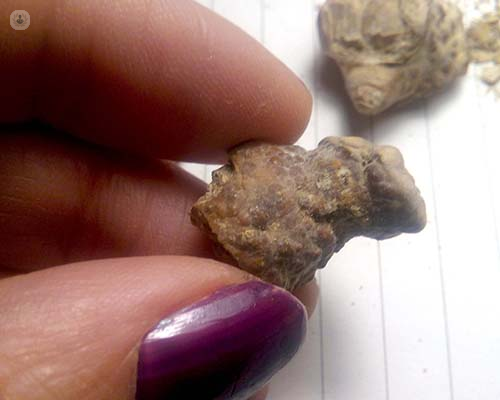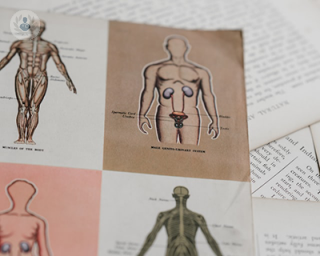Endourology
Mr Vimoshan Arumuham - Urology
Created on: 09-25-2013
Updated on: 03-30-2023
Edited by: Carlota Pano
What is endourology?
Endourology refers to a specific area in urology in which minimally invasive surgical techniques are used to see into the urinary tract and perform surgery. Kidney stones are extracted, or fragmented, using small endoscopes and instrumentation through areas such as the urethra, bladder and ureter. In addition to removing kidney stones, surgeons can determine what causes the kidney stones and help to prevent any more from forming. Most endoscopic procedures are done on an outpatient basis.

How is an endourological procedure performed?
Tiny, thin instruments, which include lasers, scalpels graspers, miniature stone retrieval baskets and cautery are worked through the urethra, bladder or ureter to perform surgery without having to make large incisions.
What are the different types of endourological procedures?
Endourological procedures differ from the traditional urological procedures as they are minimally invasive. The different types include the following:
- Urethroscopy – this is performed if the surgeon needs to have a thorough look at the urethra or the bladder and needs to take sample tissues from the lining of either area to clarify the problem. The procedure is used to treat strictures of blockages of the urethra.
- Cystoscopy – used to look inside the bladder using a thin camera called a cystoscope. It is inserted through the urethra and passed into the bladder to allow a doctor to see inside. Small instruments can be passed down the cystoscope to treat bladder problems.
- Ureteroscopy – it is an effective way for the urologist to get a clear view of the urinary tract, remove or break up stones and remove suspicious-looking tissue. Doctors sometimes use this procedure as part of shock wave lithotripsy, a treatment to break up kidney stones. Ureteroscopy is used to treat a urine blockage and tumours of the ureter.
- Nephroscopy – this is a non-surgical way to examine the inside of the kidneys. It is used to treat kidneys stones, tumours of the kidney lining and other conditions in the upper urinary tract. Using a small instrument, called a nephroscope, the thin tube part is inserted into the skin.
Am I a candidate for endourology?
Whether or not a patient is a suitable candidate for an endourological procedure depends on the result of an evaluation by an endourologist or laparoscopist. The patient’s medical history and the nature of the disease are taken into consideration.











